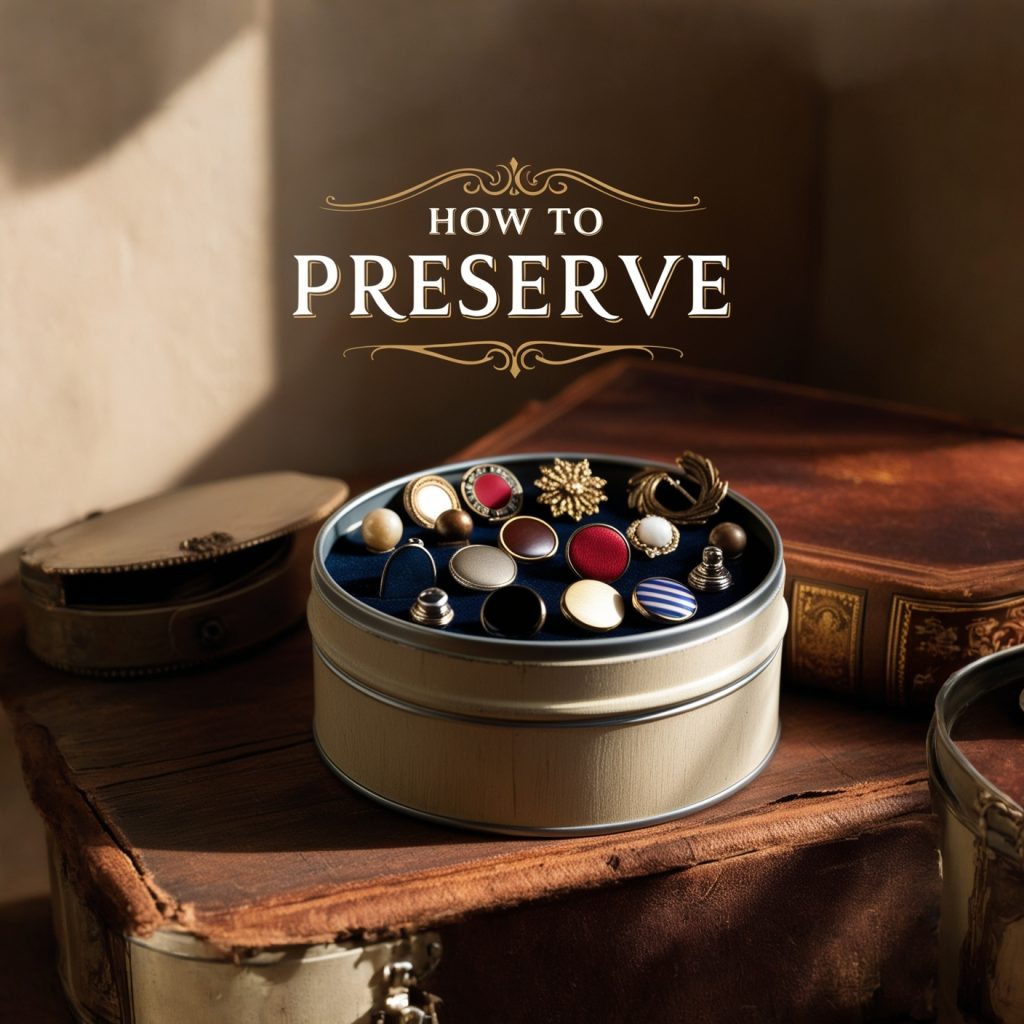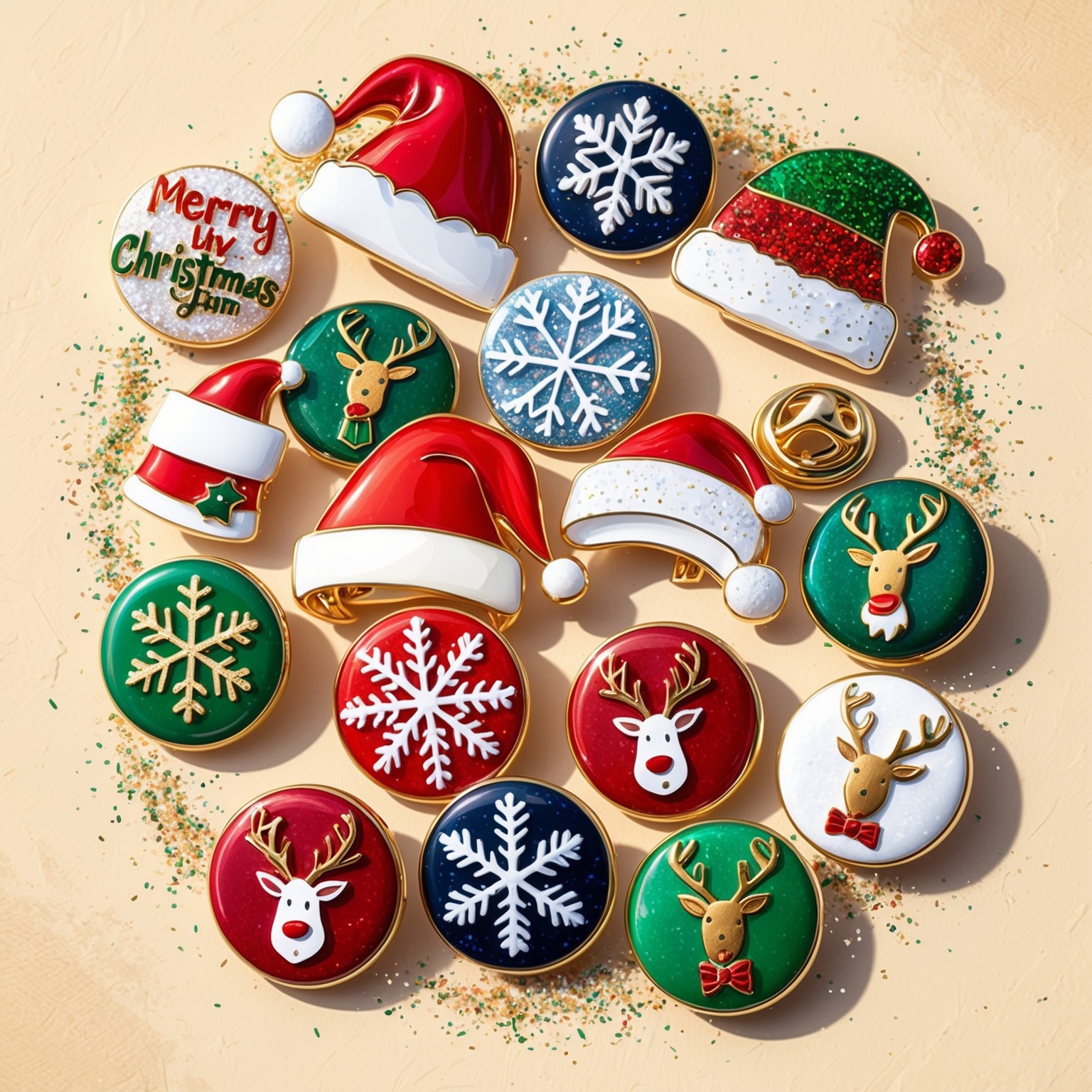Custom lapel pins have become more than just small decorative accessories; they are meaningful collectibles, personal mementos, and often valuable investments. Whether commemorating a special event, representing an organization, or symbolizing a passion, custom lapel pins hold sentimental and monetary value for their owners. From limited-edition pins to vintage finds, preserving these tiny treasures for the long term requires proper care, storage, and maintenance.
In recent years, the popularity of custom lapel pins has surged, with enthusiasts and collectors alike seeking unique designs that reflect their personal interests, professional affiliations, or participation in events. Whether you’re an avid collector or someone who has acquired a few special pins, the long-term preservation of these pins is critical for maintaining their condition and value. In the world of collectibles, condition is everything. A well-preserved pin not only retains its beauty but also holds its financial worth, especially in the secondary market where rare or high-demand pins can fetch impressive prices.
Beyond their financial value, custom lapel pins are sentimental artifacts that often hold personal stories, commemorate important moments, or represent connections to causes and organizations. Proper care of these pins ensures that they remain meaningful for years, becoming heirlooms that can be passed down through generations. In this article, we’ll explore the best practices for preserving your custom lapel pins—from choosing the right storage solutions to understanding the impact of environmental factors. These tips will help you safeguard your collection and ensure its lasting value, both sentimental and monetary.
1. Why Long-Term Preservation of Custom Lapel Pins Matters
Before delving into the best practices for preservation, it’s important to understand why maintaining the quality of your custom lapel pins is crucial. Collectors, enthusiasts, and even casual pin wearers often hold pins as part of a broader collection that may include rare or sentimental pieces. Over time, the value of certain pins may increase, and well-preserved pins tend to be more desirable in the marketplace.
A. Sentimental and Personal Value
For many people, custom lapel pins serve as keepsakes, marking special occasions or representing affiliations with organizations, causes, or hobbies. Pins are often tied to personal memories—perhaps one was gifted during a significant life event, or another represents a favorite travel destination or concert. Over time, these pins can become cherished items that hold emotional value beyond their original purpose.
B. Collectibility and Market Value
In addition to sentimental value, custom lapel pins can also have financial worth. Limited-edition pins, vintage designs, and pins that represent historic events or notable organizations can appreciate in value over time. Collectors who curate their pins carefully can see their investment grow, particularly if they maintain the pins in excellent condition. A pin’s rarity, condition, and origin all contribute to its desirability in the secondary market. This makes proper preservation even more important for serious collectors looking to keep their pins’ value intact.
C. Longevity and Display Potential
Custom lapel pins are often worn, displayed, or stored as part of a collection. Whether pins are framed in shadowboxes, kept in binders, or pinned to jackets, keeping them in pristine condition is key to showcasing their beauty and craftsmanship. Poor preservation can result in tarnished metal, faded enamel, or broken pinbacks, reducing the pin’s ability to be displayed or worn proudly.
2. Proper Storage Solutions for Custom Lapel Pins
Storage is one of the most critical factors in preserving the condition of your custom lapel pins. Improper storage can lead to scratches, tarnishing, discoloration, or even damage to the pin’s structural integrity. To avoid these issues, it’s important to store your pins in a controlled, organized environment where they can remain safe from environmental hazards.
A. Using Pin Cases and Displays
If you want to store and display your custom lapel pins while keeping them protected, consider investing in high-quality pin cases or display boards. These storage solutions allow you to show off your collection while ensuring each pin is securely attached and shielded from potential damage.
- Pin Display Boards: Display boards, often made from cork or fabric, allow you to attach pins securely while organizing them by theme, color, or collection. The pins remain visible but are protected from contact with other objects that could scratch or tarnish them.
- Shadowboxes: For collectors who want to display their custom lapel pins while keeping them safe from dust, moisture, and accidental damage, shadowboxes are an excellent solution. These frames allow for easy pin attachment on a fabric backing, with a glass front to keep the pins secure.
- Pin Storage Cases: If you have a large collection of pins or prefer to keep them stored out of sight, pin storage cases with individual slots or compartments can help protect them. These cases are typically made from soft materials that prevent scratches, ensuring each pin is kept separate from others.
B. Keep Pins Away from Moisture and Humidity
Moisture is a major enemy of metal objects, including custom lapel pins. Pins that are exposed to high humidity or water can develop tarnish, rust, or even corrode over time. If your collection is kept in an environment prone to dampness, such as a basement or attic, consider moving it to a drier, temperature-controlled location.
- Silica Gel Packs: One easy solution to combating moisture is placing silica gel packs in your pin storage cases. These packets help absorb moisture in the air, creating a dry environment for your pins. Be sure to replace the silica packs periodically for maximum effectiveness.
- Climate Control: If possible, store your pins in a room with controlled humidity and temperature levels. Ideally, the storage area should be cool, dry, and free from large fluctuations in temperature, which can lead to pin deterioration.
C. Preventing Sunlight Exposure
Direct sunlight can cause the colors in your custom lapel pins—particularly those with enamel finishes—to fade over time. To prevent this, avoid displaying or storing your pins in areas that receive a lot of natural light. Instead, place pins in shaded areas or use UV-protective glass when framing them in shadowboxes.
3. Handling Custom Lapel Pins: Minimizing Wear and Tear
Another important factor in preserving the value and condition of custom lapel pins is how you handle them. While it’s natural to want to wear or trade your pins, frequent handling without care can result in scratches, bent pinbacks, or dulled enamel. Here’s how to handle your pins properly to prevent damage.
A. Wear Pins with Care
Wearing your custom lapel pins can be a great way to show off your collection, but wearing them improperly or too frequently can cause damage. To minimize wear and tear, follow these tips:
- Avoid Excessive Handling: Constantly removing and reattaching pins to different surfaces can lead to scratches or damage to the enamel. If you plan on wearing a pin regularly, choose a secure and consistent placement, such as on a jacket lapel or hat, and minimize the number of times you move it.
- Secure Pinbacks: One of the most common issues with custom lapel pins is losing the pinback or having the pin fall off clothing. To prevent this, use locking pinbacks or rubber clutches that provide extra security compared to traditional metal pinbacks.
- Mind Clothing Fabric: Heavier fabrics, such as denim or wool, can be too thick for delicate pinbacks, potentially bending or weakening them. Choose appropriate fabrics, like lighter jackets or vests, that allow the pin to stay securely in place without stressing the metal.
B. Avoid Touching the Pin Face
The oils from your fingers can build up on the surface of custom lapel pins, particularly on enamel and metal finishes, leading to dulling or discoloration over time. When handling your pins, avoid touching the front of the pin and instead handle it by the edges or the pinback.
- Use Soft Gloves: For especially valuable or rare pins, consider wearing soft cotton or microfiber gloves when handling them. This helps prevent fingerprints and keeps the pin’s finish looking pristine.
C. Be Cautious When Trading or Transporting Pins
Pin trading is a popular activity, but it can lead to damage if you’re not careful. If you’re planning to trade or transport your custom lapel pins, take extra precautions to keep them safe during the process:
- Use Pin Trading Bags: There are specialized pin trading bags that provide padded storage for multiple pins, protecting them from scratching or jostling while you’re on the move. These bags have secure compartments or panels where pins can be organized and kept safe from potential damage.
- Transport Pins Individually: If you’re carrying a few high-value pins, consider placing each pin in an individual soft pouch or small box. This prevents them from rubbing against each other during transport, which could result in scratches or dents.
4. Cleaning Custom Lapel Pins: Best Practices for Maintaining Shine
Over time, your custom lapel pins may accumulate dust, dirt, or oils that can dull their appearance. Regular cleaning will help maintain the shine of your pins, keeping them looking new for years to come. However, cleaning your pins improperly can result in damage, so it’s important to follow safe methods.
A. General Cleaning with a Soft Cloth
For most custom lapel pins, a gentle cleaning with a soft, lint-free cloth is sufficient to remove dust and restore their shine. Microfiber cloths are ideal, as they won’t scratch the surface of the pin.
- Buffing the Surface: Gently buff the surface of the pin using circular motions. This will remove any light dust or fingerprints without damaging the enamel or metal finish.
- Avoid Harsh Cleaning Products: Never use harsh chemicals, abrasive sponges, or cleaning products on custom lapel pins, as these can damage the enamel or cause the metal to tarnish. Stick to mild methods that won’t risk harming the pin’s surface.
B. Removing Tarnish from Metal Pins
For pins made primarily of metal, such as die-struck pins or those with metallic finishes, tarnishing may occur over time. You can restore the shine of metal pins by using a specialized metal cleaner designed for brass, silver, or gold.
- Polishing Metal Pins: Use a small amount of metal cleaner and a soft cloth to gently polish the pin, focusing on the tarnished areas. Be careful to avoid the enamel portions of the pin, as these can be damaged by the cleaner.
- Soft Bristle Brush: If the pin has intricate details or recessed areas, a soft-bristle toothbrush can help remove dirt and tarnish from hard-to-reach places. Be gentle when brushing, especially around delicate areas.
C. Cleaning Enamel Pins
Pins with enamel finishes, whether hard or soft enamel, require extra care to maintain their color and vibrancy. For enamel cleaning:
- Damp Cloth for Enamel Pins: Dampen a microfiber cloth with water and gently wipe the enamel portion of the pin. Avoid soaking the pin or using too much water, as moisture can seep into small cracks or behind the enamel, potentially leading to damage.
- Dry Thoroughly: After cleaning, make sure to dry the pin completely with a dry cloth. Leaving moisture on the pin’s surface can lead to rust or discoloration over time.
5. Understanding the Effects of Environmental Factors
Environmental factors such as temperature, humidity, and exposure to pollutants can have a significant impact on the condition of custom lapel pins. To ensure the long-term preservation of your collection, it’s essential to consider how these factors may affect the pins and take steps to mitigate any potential risks.
A. Temperature Control
Sudden or extreme temperature fluctuations can cause damage to the enamel, metal, and pinback components of custom lapel pins. For example, high heat can cause the enamel to crack, while cold temperatures can make the metal brittle.
- Avoid Heat Sources: Do not store pins near heat sources such as radiators, heaters, or in direct sunlight. High temperatures can warp or melt enamel, leading to irreparable damage.
- Cool, Stable Storage: The ideal temperature for storing custom lapel pins is a cool, stable environment, such as a climate-controlled room. Avoid storing pins in places like garages or attics, where temperature fluctuations can occur.
B. Pollution and Chemicals
Airborne pollutants, smoke, and harsh chemicals can corrode or tarnish the metals in custom lapel pins. Pins that are frequently exposed to industrial chemicals, cigarette smoke, or even certain cleaning products can deteriorate more quickly.
- Keep Pins in Clean Areas: Store pins in a clean, smoke-free environment, and avoid exposing them to chemical fumes from cleaning agents, paint, or solvents.
- Use Sealed Containers: If your pins are stored in an area where pollutants are a concern, consider using sealed containers to keep them protected from environmental contaminants.
Preserving the Longevity and Value of Custom Lapel Pins
Custom lapel pins are much more than small decorative items—they are valuable collectibles, personal mementos, and often financial investments. Whether you’re building a collection for fun, sentimentality, or profit, taking steps to properly care for your pins is essential to preserving their value and appearance for years to come.
The care and attention you put into preserving your custom lapel pins can have lasting effects, especially as many collectors hope to pass these items down to future generations or add them to a curated collection with increasing value over time. Properly storing, handling, and cleaning your pins ensures that they retain their original luster and design, keeping them as vibrant and meaningful as the day you first acquired them. A well-maintained pin collection is more than just an asset—it’s a reflection of personal interests, memories, and historical moments captured in miniature art form.
Moreover, preserving your pins isn’t just about financial value; it’s about safeguarding the stories they tell. Whether a pin represents a personal achievement, an affiliation with a beloved cause, or a shared experience from a memorable event, the care you give your pins reflects the value you place on those memories and connections. By protecting your collection through careful storage, cleaning, and attention to environmental factors, you’re ensuring that your custom lapel pins continue to serve as lasting reminders of the things that matter most to you.
In the broader collector’s market, well-preserved pins will always hold more appeal to potential buyers and fellow enthusiasts. Taking the extra steps to ensure your pins remain in pristine condition will not only enhance your enjoyment of the collection but also contribute to its overall value in the long term. By implementing the preservation techniques outlined in this guide, you can confidently build a collection that endures through the years, serving as a timeless tribute to your passion for custom lapel pins.
If you are interested in ordering some high-quality lapel pins, feel free to call us at our Toll free number 1-877-513-4811 or fill out one of our FREE QUOTE FORMS.



